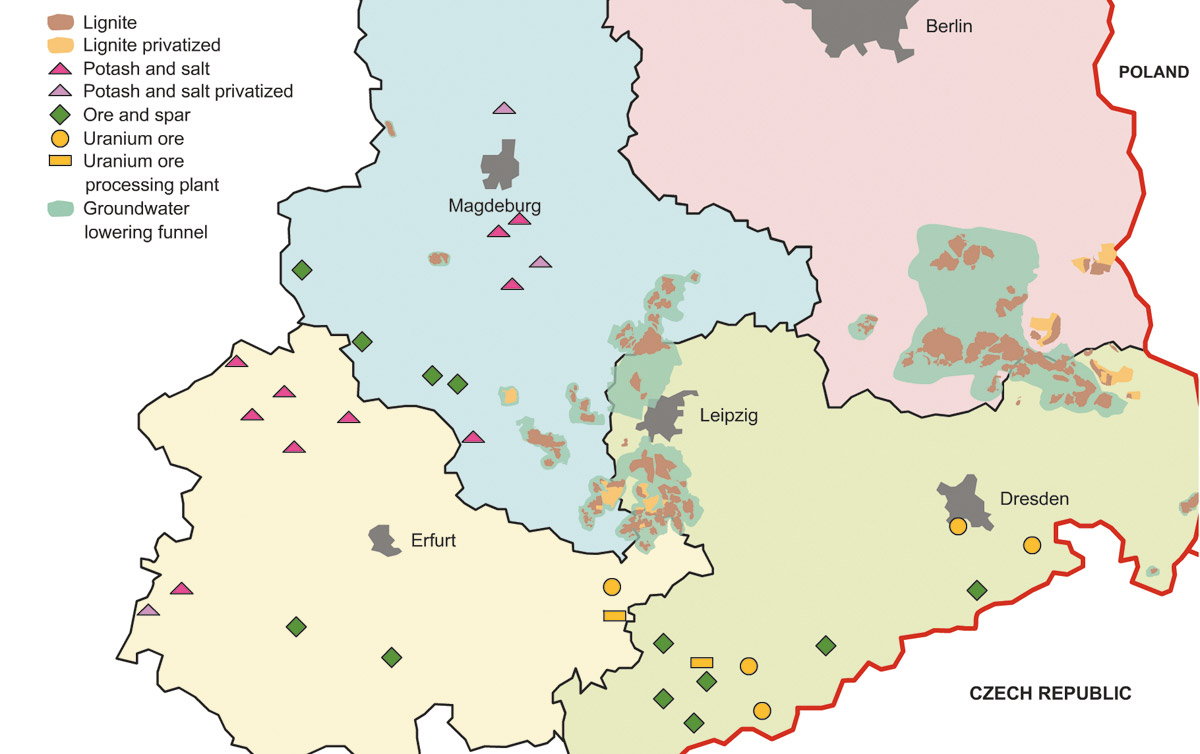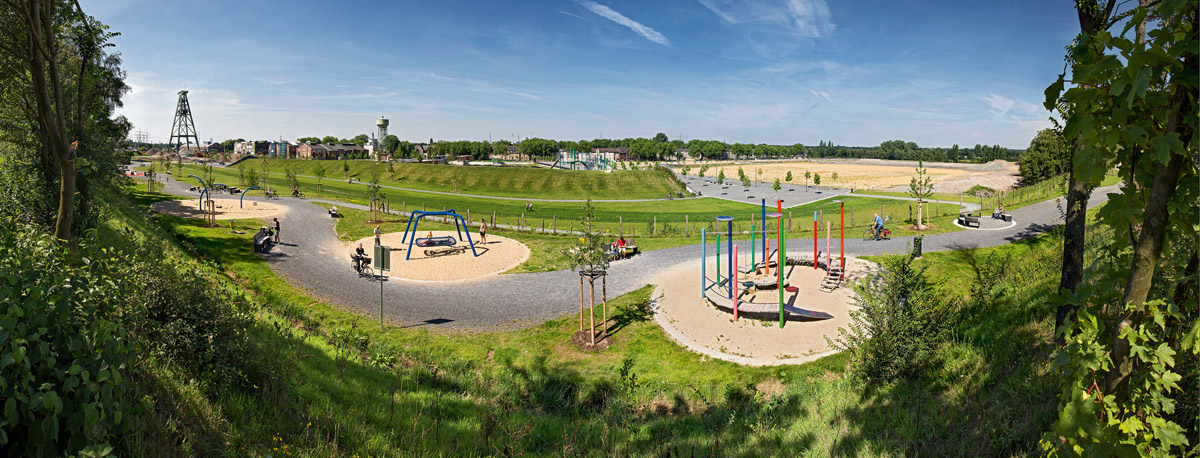The main focus of this issue of Mining Report Glückauf is once again on the legacy that the mining industry is leaving behind when it finally closes, and how this can be dealt with in a responsible way.
When a mine is closed the production phase will be followed by the decommissioning phase, when the mine is cleared of its equipment and the shafts are filled in. Only then can the post-mining era really begin. For the companies involved this step into the post-mining world will bring major, fundamental changes. Accepting permanent and sustainable responsibility for the legacies of the mining industry will therefore mean helping the affected businesses to accept a new set of structures that are adapted to meet the challenges of the future. This applies both to the company -organisation as well as to the introduction of appropriate risk-management and monitoring systems.
Read moreWith my best regards // Mit freundlichem Glückauf
Dipl.-Ing. Andreas-Peter Sitte
Chief Editor Mining Report Glückauf, Herne
The End of the German Coal Mining Industry and RAG’s Transition to the Post-Mining Era
The cessation of coal production at Herne-based RAG’s last two collieries at the end of 2018 will mark the end of several hundred years of mining in the Ruhr, Saar and Ibbenbüren coalfields in Germany. The end of the production period will immediately be followed by a decommissioning phase during which the current underground workings will have to be evacuated of their equipment and the disused shafts safely filled-in. Only then can the post-mining era really begin. For the companies involved this step into the post-mining world will bring major, fundamental changes. Accepting permanent and sustainable responsibility for the legacies of the mining industry will therefore mean helping the affected businesses to accept a new set of structures that are adapted to meet the challenges of the future. This applies both to the company organisation as well as to the introduction of appropriate risk-management and monitoring systems.Authors: Dipl.-Ing. Stefan Hager, Dipl.-Ing Frank Wollnik, Service Division On-site and Geo Services, RAG Aktiengesellschaft, Herne/Germany
Read moreWe Can Do Transformation in this Region – Interview with Prof. Hans-Peter Noll
SFor some 40 years Essen-based RAG Montan Immobilien has been helping shape structural change in North Rhine-Westphalia and Saarland by way of future-oriented and sustainable development projects. Based on former mining land these initiatives range from sports centres, business parks and logistics sites through to smart, liveable urban quarters. RAG Montan Immobilien is currently responsible for around 9,400 ha of RAG property that is no longer being used by the mining industry. Some 1,500 ha of this land is now being put to good use in the form of some 77 individual development projects in North Rhine-Westphalia and Saarland. In the following interview Prof. Hans-Peter Noll, Chairman of the Board of Directors of RAG Montan Immobilien, presents some examples from the company’s successful development portfolio.Authors: Andreas-Peter Sitte, chief editor of Mining Report Glückauf, Frank Schwarz, deputy press officer at RAG Montan Immobilien GmbH
Read moreMeeting Technical, Ecological, and Social Challenges in the Decommissioning of Potash Mines in Eastern Germany

Fig. 1. Mining regions in the German accession states in 1990. // Bild 1. Bergbaustandorte neue Bundesländer um 1990.
Authors: Dipl.-Ing. Klaus Zschiedrich, CEO, and Dipl.-Ing. Thorsten Pietsch, LMBV mbH, Senftenberg/Germany, Prof. Dr.-Ing. Mahmut Kuyumcu, TU Bergakademie Freiberg/Germany, former CEO of LMBV mbH and GVV
Read moreProgress Report on the Wismut Decommissioning Project at the Flooded Königstein Uranium Mine
Prospecting for uranium began in the Upper Cretaceous sandstones of the Elbe river valley southeast of Dresden in 1961. Systematic mine operations commenced 1964. As a response to low and decreasing ore grades alternatives to conventional mining were precociously searched for. Development of in-situ leaching technology started at the end of the sixties leading to a changed exploitation method using sulphuric acid. Uranium mining (exploitation) was terminated at 31st December 1990. Accompanying to the physical underground remediation operation including closure of mine workings and removal of technical equipment and installations comprehensive R&D-Efforts were carried out for preparation of the mine flooding. Flooding of mine section I – up to 140 m a.s.l. – started January 2001. Since January 2013, the water level is maintained in the flooded mine at 139.5 m a.s.l. by continuous pumping.Authors: Dr. Ulf Jenk, Dipl.-Ing. Carsten Wedekind, Wismut GmbH, Chemnitz
Read moreInnovative Monitoring Measures in the Phase of Post-Mining

Fig. 1. Action fields connected to post-mining. // Bild 1. Herausforderungen im Nachbergbau. Source/Quelle: THGA
Authors: Prof. Dr.-Ing. Peter Goerke-Mallet und Prof. Dr. rer. nat. Christian Melchers, Forschungszentrum Nachbergbau, Technische Hochschule Georg Agricola (THGA), Bochum, Dr. rer. nat. Andreas Müterthies, EFTAS Fernerkundung Technologietransfer GmbH, Münster
Read moreOccupational Safety as Central Element of a Modern Open Pit Planning Project
This article calls for a better consideration as well as integration of health and safety issues into all parts of the surface mining industry and points out the strong affiliation of occupational safety and modern mine planning projects. By the example of four major occupational safety issues – slope stability, bench width and height, planning of driveways and ramps, schedule of mining – the strong existing link between operational safety and planning aspects in open pit mines will be pointed out. The efficiency of a modern integrated reservoir management can be increased significantly in the earlier planning phases by considering and including the requirements of operational safety management.Authors: Dipl.-Ing. Stefan Fuchs, M.Sc., advisor/referent of BG RCI and owner-manager FUMINCO GmbH, Aachen/Germany
Read moreMixing Technology in Mining Applications: Make the Mixer Match
It is often necessary to stabilize the backfill material in mining applications. The spectrum can range from stabilizing powdery materials with particle sizes of a few tenths of a millimeter, to mixing filter cake with lumps larger than a human fist, to dry processing or to manufacturing nearly liquid sludges. Mixers that cost-effectively process large quantities of materials into homo-genous mixtures are also used to moisten materials, such as fly ash, for transportation purposes to minimize dust emissions and for safe disposal. There are many different types of mixers to cover this wide range of applications. The task is to select the right mixer for the various applications, meaning a system that is suitable both in terms of the homogeneity of the mixture and the mixer’s performance. This article is intended to act as a guide in this selection process.Author: Dipl.-Ing. Thomas Berens, Sales Manager Industrial Mixing Solutions, BHS-Sonthofen GmbH, Sonthofen/Germany
Read moreEnergy Source Uranium – Resources, Production and Adequacy
Germany is one of the first developed industrialized countries that is leaving the peaceful use of nuclear energy. It is important to note that other industrialized countries, such as Austria and Australia, did not start and Italy confirmed its exit after Fukushima (Figure 1). In addition to the risk technology “nuclear power”, two other factors have been and are still being argued against the use of nuclear energy; the lack of long-term disposal facilities, in particular for the spent nuclear fuels and the waste from the reprocessing process, as well as the lack of resource security for the nuclear fuel uranium (thorium). In this article the second question is to be considered which focuses the resource security for the energy raw material uranium. For the energy source uranium it is clarified as to what extent natural resources are known, what results coming from further exploration are to be expected, and under which boundary conditions the resulting adequacy can be quantified and assessed. In addition the extent will be discussed to which the amount of known resources has so far developed and the time dependency, from which forecast a discussion of adequacy should be based.Author: Dr.-Ing. Michael Lersow, Breitenbrunn/Germany
Read more





















